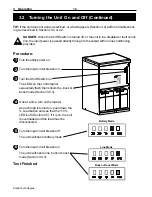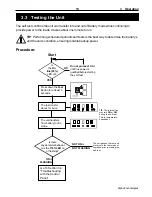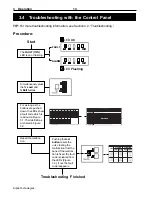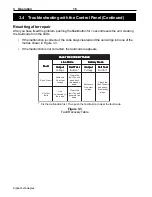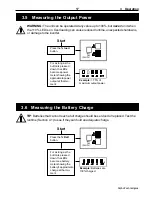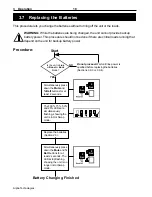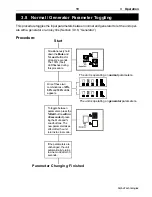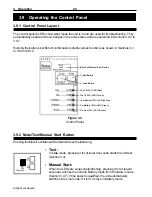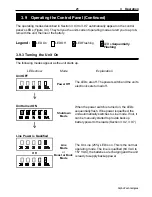
7
2 Installation
Alpha Technologies
2.1 Site Preparation Checklist
Site Requirements
Install the unit on a surface that supports the weight (between 50-90 lbs (23-41 kg) de-
pending on the batteries used). The input wires must reach a suitably grounded power
outlet and the load’s wires must reach the unit’s output terminal block.
Circuit Breaker
Connect the unit to a dedicated utility line equipped with an appropriately sized circuit
breaker (see Section 5.2 “Specifications”).
Grounding
TIP:
The unit must be correctly grounded for proper operation.
Older facilities may have inadequate electrical grounding. A qualified electrician should
inspect it before installation to see it meets the local electrical code.
Standby Generator (If Used)
TIP:
If the unit constantly switches between Battery and Line modes due to a noisy line,
the unit’s input parameters should be broadened from Normal to Generator.
In Generator mode, the range of acceptable input frequency and voltage is expanded to
accept the fluctuations created by a generator (Section 3.8, “Normal / Generator Param-
eter Toggling”).
Use a generator with electronic speed and voltage controls which produces less than 10%
voltage Total Harmonic Distortion (THD). Mechanical governors can force the unit to run
continuously in Battery mode.
Before installation, make sure the generator’s output voltage is compatible with the unit’s
input voltage requirements by comparing the specifications listed on both machine’s
nameplates. For the smooth running of the system, use a generator that supplies twice as
much power as drawn by the total load.
2.2 Mounting
The cabinet can be either wall or pole mounted. First attach the mounting bracket that came with
the unit to the wall or a pole. Then hook the cabinet to the top of the bracket and swing it down.
Then attach the bottom of the bracket to the bottom of the cabinet with the two mounting screws.

















